The 12 Day is truly a self-designed unforgettable safari in Botswana, The tour not only brings to the hot-spots ,but also overnight in complete natural environments from the Okavango Delta to the Ntwetwe Salt Pan in the Makgadikgadi National Park.
| Days | Towns | Lodges / Guesthouses | Dinner / Breakfast/Lunch |
|---|---|---|---|
| 1 | Gobabis | Harnas Wildlife Foundation lodge | D |
| 2 | Gobabis | Harnas Wildlife Foundation lodge | B / L / D |
| 3 | Ghanzi | Palm Afrique Lodge | B / L / D |
| 4 | Maun | Maun country Lodge | B / L / D |
| 5 | Okavango Delta | Delta overnight | B / L / D |
| 6 | Makgadikgadi National Park | Gweta Lodge | B / L / D |
| 7 | Gweta | Ntwatwa salt pan overnight | B / L / D |
| 8 | Elepahants Sands | Elepahants Sands Lodge | B / L / D |
| 9 | Chobe – Botswana | Kwalape safari Lodge | B / L / D |
| 10 | Chobe – Botswana | Kwalape Safari Lodge | B - D |
| 11 | Victoria Falls | Drift – in Victoria Falls | B / L / D |
| 12 | Victoria Falls | Drift – in Victoria Falls | B - D |
| 13 | Kasane Airport | - | B |
Your tour guide will pick you up from your accommodation in Windhoek . Our journey takes us to the first rehabilitation farm opened in Namibia, the Harnas Wildlife Foundation. Harnas. It is one of the few wildlife orphanages and medical centers in the world that takes in abused, injured and captured wild animals from Namibia, Botswana and southern African countries, saving hundreds of animals each year. Their mission is to protect lives; This is done through responsible and effective management, regulation and understanding of the resources required for this task. When you arrive, you can take the time to stroll around and get to know all the animals in the area.
After breakfast we take part in a feeding tour in the second section of the lodge. The lodge is divided into 3 parts. Part one focuses on small and injured animals that need to be cared for by volunteers from around the world. The volunteer work lasts between 2 weeks and 3 months. In the second part of the farm, animals that are ready to be released into the wild are kept in larger enclosures and fed twice a day by volunteers. The 3rd part of the farm is called LIFELINE. The Lifeline covers almost the entire farm. It is a section without fences and animals can roam freely and hunt on their own as antelopes live in this area. After dinner, visit the Bushman Village to experience African Bushman stories under the beautiful African sky and a campfire. get to know all the animals in the area.
It's our 3rd day of the tour in Africa and there is so much to look forward to. After an early breakfast, we drive about an hour to the neighboring cabin for a morning walk with the Bushman. The walk focuses on the beauty of the culture and the knowledge passed down from one generation to the next. It is believed that the hunter-gatherer Bushman's ancestors were the first inhabitants of what is now eastern Namibia, Botswana and South Africa. The Bushman's historical presence in Botswana is particularly evident in the Tsodilo Hills region of northern Botswana. After our first activity we continue to our destination in Ghanzi – Botswana. Have all documents for crossing the border ready.
After breakfast we set off again to Maun. We spend our first night at the Maun country Lodge. Maun is the fifth largest city in Botswana. In 2011 it had a population of 55,784. Maun is the “tourism capital” of Botswana and the administrative center of the Ngamiland district. Upon arrival, your guide will take you on a short walking tour of the city. You are welcome to take some souvenirs with you. Not only will you be taking home a souvenir, but you'll also be showing your support for the local businesses in town. Please note: To prepare for wilderness camping (overnight) in the Okavango Delta the next day. So pack a small backpack with luggage for one night and take all important documents with you. The guide will give you more information about the delta over dinner during the overnight stay.
We prepare for a very early departure with breakfast packages. We are picked up by a local tour guide and taken on a one-hour drive to the Okavango Delta. We then switch to the mokoro canoes for another hour until we reach our campsite. The campsite is in the middle of the forest, surrounded by wildlife. We will be guided by some local professional tour guides for the night. We will then have a light lunch and prepare for a sunset bush walk with a local guide. If we are lucky, we can observe the wildlife on foot. As soon as we get back, the campsite will be prepared and the campfire will be lit. Watch the open sky full of bright stars.
Wake up early with a light meal and coffee/tea. We accompany a local guide on a morning bush walk to see wildlife again. The delta is home to wildlife such as lions, leopards, hippos, crocodiles, a variety of birds and antelopes. After a three-hour walk, we return to camp and enjoy a cooked breakfast before preparing for the journey back to Maun by mokoro canoe. We expect to be back at the hotel in the afternoon. From Maun to the planet Baobeb in the Makgadikgadi Pan. The Makgadikgadi Pan consists of three separate salt pans - Sowa (Sua), Nxai and Ntwetwe - which together cover 12,000 square kilometers of the northeastern part of Botswana, making them the largest collection of salt pans in the world. Warning: You will need to prepare for an overnight stay on the Ntwetwe Salt Pan again
We expect a very early start. Game drives from Gweta Lodge take you deep into the Ntwetwe Pan, the larger of the two Makgadikgadi Pans, and a vast expanse of glistening salt that stretches as far as the eye can see - and then some! Remarkably, there is life here and game drives will spot some of the uniquely adapted desert species such as bat-eared foxes, springboks, Kori bustards and perhaps even the magnificent desert-adapted elephant and lion if you are lucky enough to site. Makgadikgadi Pans, an area larger than Switzerland that was once the largest freshwater area on earth. Today it is a vast salt pan desert with shimmering sands and surreal landscapes so vast you can see the curvature of the earth. It is a harsh and barren landscape, but beautiful in its desolation. Here, perhaps more than anywhere else in the world, you will be overwhelmed by a feeling of complete, wonderful isolation.
Today we wake up to the first rays of sunshine and the smell of good coffee. Immediately after breakfast we will give a short lecture about the Ntwetwe Salt Pan and the emergence and importance of the tourism industry in Botswana. Bedding is packed up and we get the quads ready to go. Once we arrive at the lodge, we load our luggage into our car and continue our journey to the Elephants Sands. Between two of Botswana's main attractions, the Okavango Delta and Chobe National Park, lies a place where fine sand and giant elephants meet. Combining these two things creates a place where both come together for those of us looking for adventure. This is a camp that combines the beauty of African nature and its wildlife.
Botswana Chobe National Park. Chobe National Park in northern Botswana has one of the largest concentrations of game in Africa. It is the third largest park in the country in size after the Central Kalahari Game Reserve and Gemsbok National Park and has the greatest biological diversity. It is also Botswana's first national park. Upon arrival, you can spend the rest of the day participating in the activities offered by the lodge.
Spectacular views of the African landscape and wildlife. Chobe National Park is known for its huge herds of elephants and abundance of birds and wildlife. This trip can be booked upon arrival at reception. The afternoon boat ride in Chobe National Park is the recommended adventure tour for today. Since the park's largest concentration of wildlife can be found on the banks of the Chobe River in the dry season, boat trips with spectacular experiences are particularly worthwhile.
After breakfast we continue our short journey to the mighty Victorai Falls in Zimbabwe. Make sure you have all the papers and necessary documents for border control ready. The guest must pay a visa fee of 30 €s upon arrival. After all the paperwork, we continue to our accommodation, check in and enjoy a light lunch before spending the day visiting Victoria Falls. Victoria Falls or Mosi-oa-Tunya (Tokaleya Tonga: The Thundering Smoke) is a waterfall in southern Africa on the Zambezi River on the border between Zambia and Zimbabwe. It has been described by CNN as one of the seven natural wonders of the world.
Today the guest can stroll through the city for the rest of the day and enjoy the day off. Guests can book some activities to take part in. The recommended activity is a 12-minute helicopter flight over the mighty Victoria Falls. There is time for additional activities such as white water rafting, bungi jumping, elephant riding and much more. For further information please contact your tour guide. Victoria Falls: One of Africa's greatest attractions and one of the most spectacular waterfalls in the world: Victoria Falls is located on the Zambezi, the fourth largest river in Africa, which also forms the border between Zambia and Zimbabwe. Because of the falls' unique geography, you can view them directly and experience the full force of their thundering noise and power.
End of Tour After breakfast. Transfer to Victoria Falls International Airport
Departures: From June to October
Price Per Person: € 3 300
Participants : Min 4
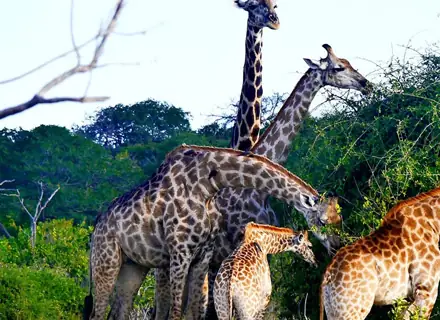
Chobe National Park is a true wildlife paradise and one of the magnificent attractions for tourism.
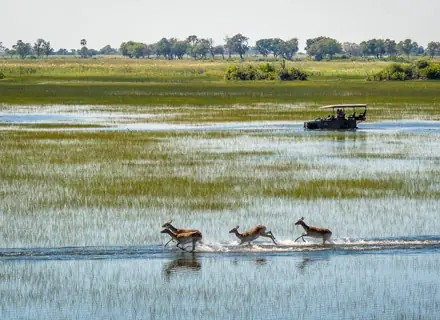
Okavango Delta National Park is awe-inspiring. Stunning Okavango Delta is formerly known as the Okavango Grassland.
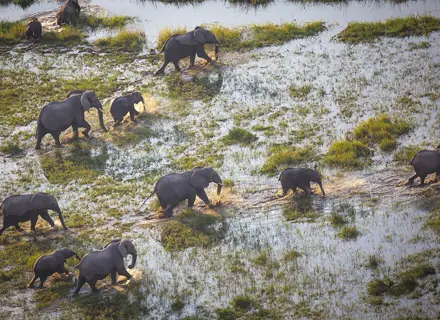
Maun is the third-largest town in Botswana. It’s an eclectic mixture of recent buildings and native huts.
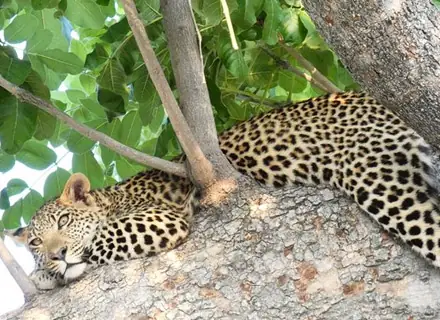
This beautiful region situated within the central and eastern areas of the Okavango.

This beautiful land is a salt pan - with an area of three, 900 kilometers.
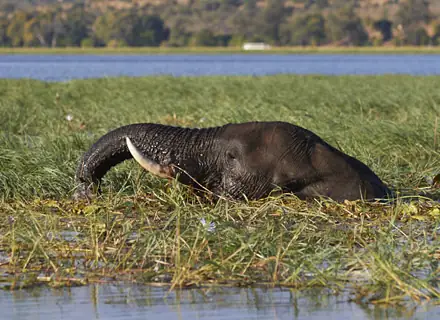
Kasane lies in a riverine forest at the meeting point of four countries - Botswana, Zambia, Namibia and Zimbabwe.
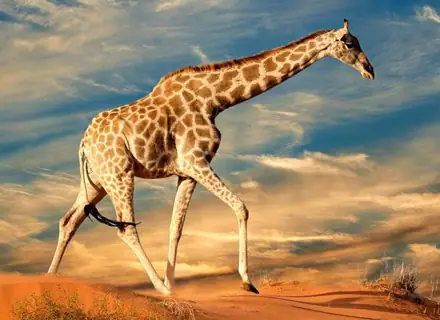
The land-bound between Namibia and Botswana, there is a magical corner of wilderness for serious safaris.
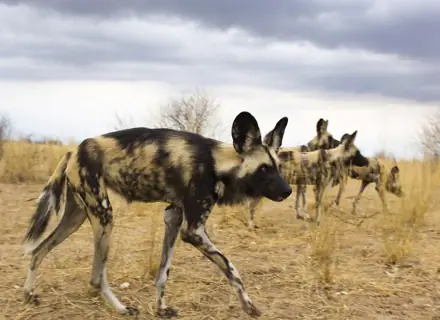
This giant reserve is situated within the heart of the Kalahari, about 200 km south of Maun.
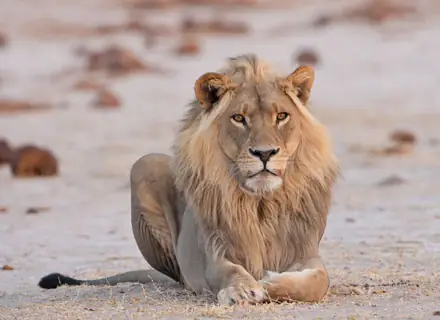
This stunning Park is dominated by large salt pans, which magnetize large herds of animals.